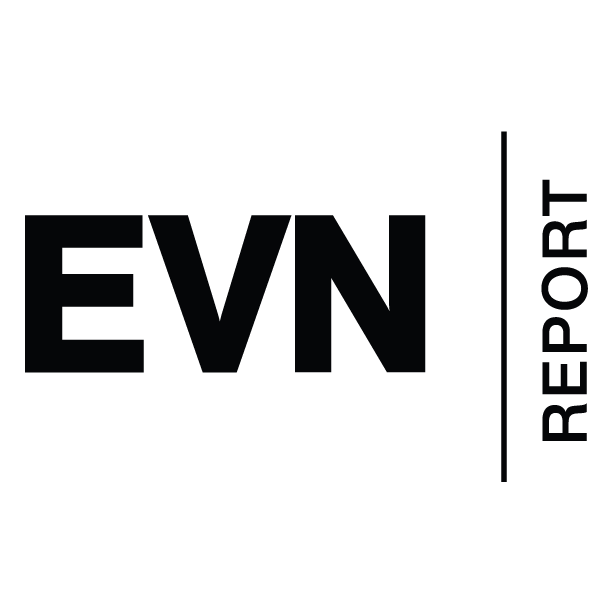
Listen to the article.
When my daughter was born prematurely, I didn’t know how quickly I’d have to choose between my career and her care. Seven months later, I was back at work, not because I was ready, but because I had no other choice. Armenia has no state-provided childcare for children under two, no affordable options for families like mine, and only 144 days of paid maternity leave, most of which I had already used up. Fathers receive only five days of paid paternity leave, severely limiting their ability to support their families during this critical time.
Given my daughter’s age and needs, we hired a nanny, a serious financial burden on our family budget. When she turns three, we’ll enroll her in a private preschool, not by choice but by necessity. Public kindergartens are overcrowded, understaffed, and operate in poor conditions. This choice, too, comes at a cost.
Statistically, I am part of a broader paradox. Armenian women are more educated than men, but far less likely to be employed. According to a 2024 World Bank Gender Assessment Report, less than half of working-age women in Armenia participate in the labor force. The reason isn’t a mystery: caregiving. And those women who do work, earn, on average, 30% less than their male counterparts. Behind every data point is a woman doing the math, on cost, childcare, and how much of herself she’s willing to give up just to stay in the game.
For families that can’t afford private solutions, the options are even more limited. State-run kindergartens accept children starting at age two, but demand far outstrips supply. Long waiting lists are the norm. Private kindergartens may accept younger children, but they’re financially out of reach for most families. The result: women, especially mothers of young children, exit the workforce for years, and some never return.
Hiring a nanny is often more expensive than daycare. Many mothers turn to grandparents, creating multigenerational households of necessity, not nostalgia or tradition. But even that option assumes proximity, health and willingness. Not every family has it.
This is not just a private hardship—it’s a public crisis. The World Bank has called Armenia’s low rate of female labor force participation a major missed opportunity. By excluding women from the workforce, the country is forfeiting growth: estimates suggest that closing the gender participation gap could raise GDP by 4% to 6%. But participation is only part of the picture. Even when women are employed, they earn just 70% of what men make in similar roles, making equal pay essential to any serious strategy to bring more women into the workforce.
Until we address equal pay, we’re only pretending at equality.
My situation, despite difficulties, is still one of privilege. Many women in Armenia face far more limited choices. The question isn’t whether they want to work. The question is: how are they supposed to?
The Kindergarten Crisis
In a written response to EVN Report, the Ministry of Education, Science, Culture, and Sports acknowledged that preschool services remain inaccessible in around 160 settlements across the country.
Despite some progress, access to childcare remains uneven. In 2024, preschool enrollment reached 82,768 children, with the enrollment rate for 3–5-year-olds at 75%––a 5% increase from the previous year.
While enrollment numbers suggest some progress, they don’t reflect the full picture. In urban areas like Yerevan, demand far outpaces supply. A study published by Infocom in March reveals a critical shortage of spaces in the capital’s public kindergartens. Of the 55,904 children aged 2–6 in Yerevan, only 27,970 can be accommodated in the city’s 162 municipal kindergartens. Nearly 15,000 children remain on waiting lists, and even after registration, securing a spot remains a significant challenge.
With limited options, parents must turn to private kindergartens, hire nannies, or care for their children at home. These are often not genuine choices, but forced alternatives due to the lack of accessible public services. A survey of 216 Yerevan parents found that while 50% of children attend public kindergartens, the rest rely on private care or stay home because of cost barriers, lengthy waiting lists, or poor conditions in public facilities.
Private childcare options face significant limitations. Of more than 320 private centers in the city, only 137 are licensed. Monthly fees average 104,000 AMD ($267) and can reach up to 300,000 AMD ($769). Nanny services cost between 30,000 ($77) to 150,000 AMD ($385) per month, depending on hours, with some rates reaching 250,000 ($640). For context, the average monthly wage in Armenia is around 280,000 AMD ($717).
The government’s State Program for Education Development aims for 95% preschool enrollment by 2030, through infrastructure improvements and private sector growth. Yet with 26% of interested families still unable to access public preschool, the shortage remains a significant barrier—especially for mothers forced to postpone or abandon employment due to lack of affordable childcare.
Government Action
In 2018, the Armenian government launched the “State-Funded Nanny” program to address childcare needs and maternal employment.
The program served citizens who were registered with local State Employment Agencies, had children under the age of three, and returned to work before their child turned two. Parents could choose either a fee-based preschool or a nanny for childcare. The state covered 50% of these monthly fees for children under age two, up to the minimum monthly wage. The program operated for 11 months annually.
In 2019, the government allocated 319 million AMD ($818,000) to expand the program in response to growing demand. The number of beneficiaries had more than doubled—from 200 in 2018 to 475 in 2019. Prime Minister Nikol Pashinyan emphasized the importance of sustaining and expanding the initiative.
In 2020, the program expanded further when the government increased the budget to 448.8 million AMD ($1.15 million) to support 600 participants—a 20% increase from the previous year. By mid-2020, 224 people had returned to work, including many healthcare workers and teachers during the early months of the COVID-19 pandemic. Given the high demand, the program prioritized families with multiple young children, children with disabilities, and lower-income households. When the pandemic forced preschools to close, the program adapted by allowing beneficiaries to switch to nannies while maintaining their benefits, demonstrating flexibility during the crisis.
In 2021, the program continued to operate, enabling 175 citizens to return to work by April through subsidized childcare arrangements. However, on January 1, 2022, the program was discontinued. The Ministry of Labor and Social Affairs announced a temporary halt to employment-related programs while developing new sectoral strategies. According to spokesperson Zara Manucharyan, the Ministry would review, and potentially revise or replace existing programs to align with strategic priorities.
Though the government shows no indication of reviving the “State-Funded Nanny” program, it has launched a new pilot initiative for early childhood education focusing on children under two years old. The Education Ministry informed EVN Report that under its State Program for the Development of Education until 2030 Action Plan, it will establish nine preschool groups for children aged 1–2 and one group for infants aged 6–12 months in Yerevan during the 2025–2026 academic year.
The government has set ambitious early childhood education goals: providing affordable preschool services in all communities, ensuring at least one year of preschool for all children before school entry, achieving 95% enrollment for children aged 3–5 in preschool programs, and establishing nursery services in all consolidated communities.
These initiatives align with the 2025–2028 Strategy and Action Plan for the Implementation of the Gender Policy, which aims to narrow the gender gap in the labor force and strengthen labor rights protection—particularly for women. Despite existing programs to support women’s economic participation, the gender gap increased to 32.3% in 2022, with women aged 25–34 facing the highest disparity (41%). This gap primarily stems from women’s disproportionate burden of caregiving responsibilities, forcing many to postpone or abandon their careers.
The gender policy emphasizes expanding childcare and preschool services to support working parents and balance caregiving responsibilities. It promotes gender equality through increased employment opportunities, higher female workforce participation, career advancement support, and strategic workforce management to fully integrate women into the economy.
The government acknowledges that previous initiatives were fragmented and limited in scope, highlighting the need for more comprehensive, society-wide approaches. Women still carry most of the burden of unpaid and undervalued caregiving and household labor. Long working hours and inflexible workplace policies continue to limit their participation in paid work.
The policy aims to ensure nationwide access to a broad range of childcare services for both parents, while narrowing gender disparities in household duties—including care for children, elderly family members, and other dependents.
Also see
Breaking Social Norms: The Path to Closing the Gender Pay Gap
Armenia’s gender pay gap persists despite women’s educational achievements and growing workforce participation. Narrowing this gap requires legal reforms, supportive policies, and a cultural shift toward equity and inclusion. Jana Bohlmann explains.
Read moreMotherhood Behind Bars
Exploring the lives of incarcerated mothers at Armenia's Abovyan Penitentiary, Astghik Karapetyan delves into the challenges of raising children in confinement, the impact on maternal bonds, and the institutional efforts to balance rehabilitation with the children’s best interests.
Read moreWomen: The Driving Force in Agriculture
In Armenia's agricultural sector, women take on a more prominent role than men. During the hot summer months, women’s work groups move from region to region, laboring in vast fields from dawn. Their work not only supports their families but also sustains the country’s agricultural resilience.
Read moreThe Feminization of Labor Migration: Women’s Changing Family Roles
Unemployment and financial hardship are pushing Armenian women to seek employment overseas, particularly to the United States and Turkey. Gayane Mkrtchyan addresses the feminization of labor migration, the vulnerability these women face, and the evolving dynamics of Armenian families.
Read moreBorn Too Soon: Challenges of Premature Births in Armenia
When she unexpectedly had to deliver her first baby at 29 weeks, Hranoush Dermoyan had no idea what the journey ahead entailed. Weighing only 700 grams, her daughter spent the first 75 days of her life in NICU. The experience revealed emotional and medical challenges, and healthcare disparities in Armenia.
Read more





